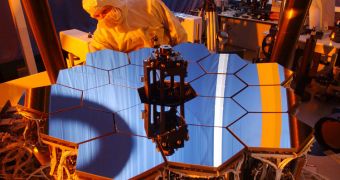According to analysts, constructing the James Webb Space Telescope is an endeavor that requires broad political support outside NASA and the international scientific community. This is the lesson that can be derived from past “big science” projects.
The JWST is scheduled to succeed the NASA/ESA Hubble Space Telescope as the American space agency's flagship mission to Earth's orbit. Hubble was itself plagued by problems, delays and cost overruns during its development.
It took NASA $10 billion and about 20 years to put Hubble together, and an additional five shuttle missions to repair and upgrade the satellite. The last maintenance flight was carried out aboard the orbiter Atlantis, back in 2009.
At this point, the JWST is also several years behind schedule, and estimated to cost in excess of $8.8 billion dollars. Unlike Hubble, however, it does not benefit from broad political support in Congress and elsewhere, Space reports.
In fact, the US Senate wanted to have the entire project discontinued last year, and it was only through a small miracle that the bill did not pass. JWST will continue to receive development funds throughout 2012, although the money flow may stop next year.
Generally speaking, “big science” projects require everyone to be on board. They usually take a lot of time to develop, experience cost and time delays, and are ultimately really frustrating to put together.
On the other hand, their data returns cannot be matched by anything else scientists currently have access to. The JWST, for example, will be able to see as far back into the Universe as when the first stars began to generate light.
Additionally, it will be able to detect exoplanets in orbit around their parent stars, investigate the ultimate fate of stars and galaxies, study the accretion disks around black holes and many more.
“For big science on the scale of megaprojects, the support of scientists is necessary but the historical record argues it is not sufficient. Big science raises big questions and strong support from outside of the scientific community is needed to sustain a megaproject over a long period,” Robert Smith explains.
The analyst is a historian of science at the University of Alberta in Canada. From a historic perspective, the United States do have a history of not always supporting large projects, such as the proposed Superconducting Super Collider particle accelerator.
The SSC was supposed to be larger than CERN's LHC, but it never managed to gain enough support.

 14 DAY TRIAL //
14 DAY TRIAL //